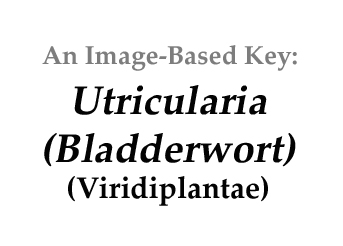|
Home / Anomalous_Items / Aquatic_Macrophytes / Submerged_Leaves /Utricularia |
||||
|
|
||||
|
Click on images for larger format |
||||
Name derivation: |
||||
|
“Small bags”. Common name ‘Bladderwort’. |
||||
Classification: |
||||
Utricularia Linnaeus 1753Class Scrophulariales; Family Lentibulariaceae |
||||
Morphology: |
||||
|
Unique “utricules” – some leaves have been greatly modified into pouches with hinged covers that can be triggered by small zooplankton such as rotifers to sweep the animal inside and trap it, providing a supply of nitrogen (as NH3) for the plant. The utricle epidermis, both inside and outside, contains a large diversity of trichomes (epidermal hairs), some of which secrete mucilaginous material -- presumably to aid in trapping prey. They also have trigger hairs, four in U. biflora, that cause the door of the trap to sweep shut (Thurston and Seabury 1975). Non-utricular leaves are alternate on the branching stem, highly dissected (lack a blade), and bifurcate. The entire plant is submerged except for the floral stalk that produces several bilaterally symmetric flowers. |
||||
Habitat: |
||||
|
|
||||
References: |
||||
|
Thurston, E.L., and F. Seabury 1975. A scanning electron microscopic study of the utricle trichomes in Utricularia biflora Lam. Botanical Gazette 136:87-93. |
||||











